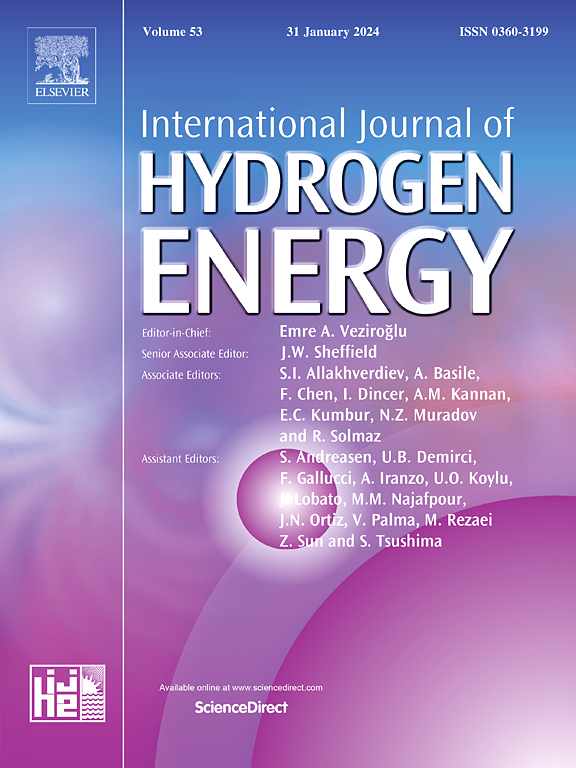Evidence of hydrogen release during CO2 sequestration in basalt
IF 8.1
2区 工程技术
Q1 CHEMISTRY, PHYSICAL
引用次数: 0
Abstract
Addressing climate change requires effective carbon sequestration techniques, with geological storage in basalt formations being a prime candidate due to their widespread availability and capacity for mineral carbonation. This study explores CO2-basalt interactions under subsurface conditions, focusing on incidental hydrogen (H2) generation. Controlled experiments at 5 MPa and temperatures between 323K and 373K reveal preliminary evidence of H2 release, measured up to 0.18 wt% of the gas phase during CO2 injection into basalt. Total Inorganic Carbon (TIC) measurements provide direct evidence of carbon sequestration, with values increasing from a baseline of 20.9 mg/L to 463 mg/L and 468 mg/L at 323K and 373K, respectively. These findings enhance our understanding of basaltic carbon sequestration mechanics and suggest a potential avenue for H2 production alongside carbon storage. This study presents the first experimental evidence of H2 generation during CO2 sequestration in basalt under controlled subsurface conditions, highlighting potential dual benefits for carbon storage and clean energy production.
玄武岩二氧化碳封存过程中氢释放的证据
本文章由计算机程序翻译,如有差异,请以英文原文为准。
求助全文
约1分钟内获得全文
求助全文
来源期刊

International Journal of Hydrogen Energy
工程技术-环境科学
CiteScore
13.50
自引率
25.00%
发文量
3502
审稿时长
60 days
期刊介绍:
The objective of the International Journal of Hydrogen Energy is to facilitate the exchange of new ideas, technological advancements, and research findings in the field of Hydrogen Energy among scientists and engineers worldwide. This journal showcases original research, both analytical and experimental, covering various aspects of Hydrogen Energy. These include production, storage, transmission, utilization, enabling technologies, environmental impact, economic considerations, and global perspectives on hydrogen and its carriers such as NH3, CH4, alcohols, etc.
The utilization aspect encompasses various methods such as thermochemical (combustion), photochemical, electrochemical (fuel cells), and nuclear conversion of hydrogen, hydrogen isotopes, and hydrogen carriers into thermal, mechanical, and electrical energies. The applications of these energies can be found in transportation (including aerospace), industrial, commercial, and residential sectors.
 求助内容:
求助内容: 应助结果提醒方式:
应助结果提醒方式:


